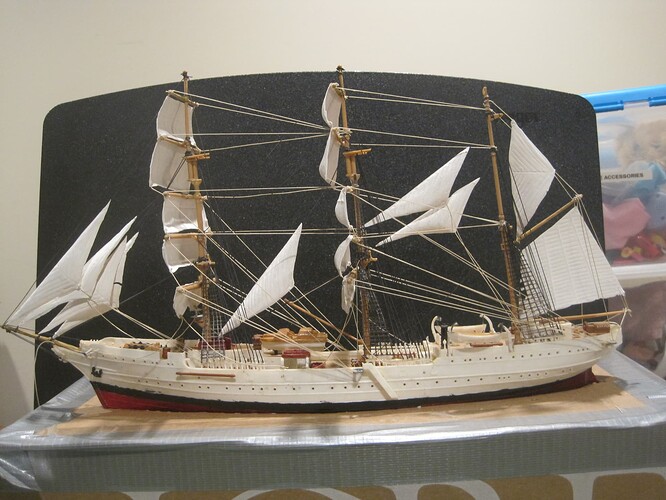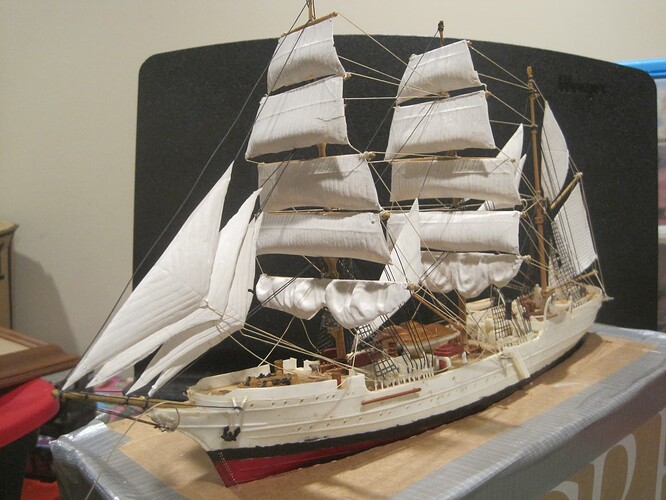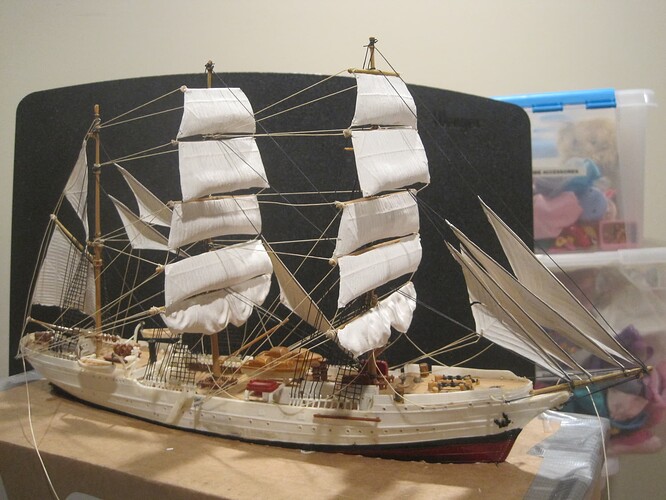Good questions. While the canvass which is hoisted can clearly vary due to any number of conditions, two things I have noticed that are different between the rig of the kit and almost every photo I can find of the Eagle. Like the photos, the kit has a foremast staysail and jibs, a flying jib, an outer jib and an inner jib. Between the foremast and mainmast the kit has only the Main Royal staysail, while almost all photos show two additional staysails between the fore and main mast.
Like most photos the kit has two staysails between the main and mizzen mast, a mizzen topgallant staysail, and a mizzen topmast stay sail.
That’s just a simple sail choice difference.
The biggest difference between the kit and almost every photo is the fact that on the kit there is only a mizzen boom and one gaff, with a spanker sail between them and a gaff topsail above.
Every photograph that I have found shows TWO gaffs, with a second spanker between them and THEN the gaff topsail above that.
Whether that second gaff was added later (I’m guessing doubtful!) OR was an omission is hard to say at this point.
What is interesting is that photos of the US Revenue Cutter Salmon P. Chase (1878-1907) shows the single gaff rig.
Regardless of why the kit only has one, (and BTW, for some reason in the transit that gaff has disappeared), even though it is just as easy to scratch TWO gaffs as it is to scratch one, I only have the sails to fit the single gaff rig, so that’s how I’ll repair the kit.
As I said, it is now intended to be a decoration, and NOT an accurate and detailed representation of the actual ship. (And as most of you will know, that is NOT how I usually roll. Or in this case sail,  )
)


